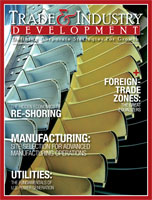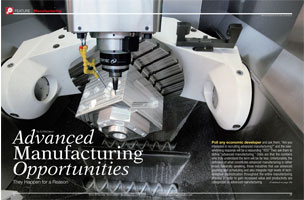Advanced Manufacturing Opportunities
Poll any economic developer and ask them, “Are you interested in recruiting advanced manufacturing?” and the overwhelming response will be a resounding “YES!” Then ask them to define “advanced manufacturing.” Odds are that the numbers who truly understand the term will be far less. Unfortunately, the definition of what constitutes advanced manufacturing is rather broad. Generally speaking, those industries that use advanced planning and scheduling and also integrate high levels of technological sophistication throughout the entire manufacturing process in order to gain increased value and productivity are categorized as advanced manufacturing. Advanced manufacturing is not a description of a specific type of manufacturing; instead, it is both a philosophy and concept of continuous process improvement and adaptation that has a direct bearing on the suitability of a facility for any given community. more....


